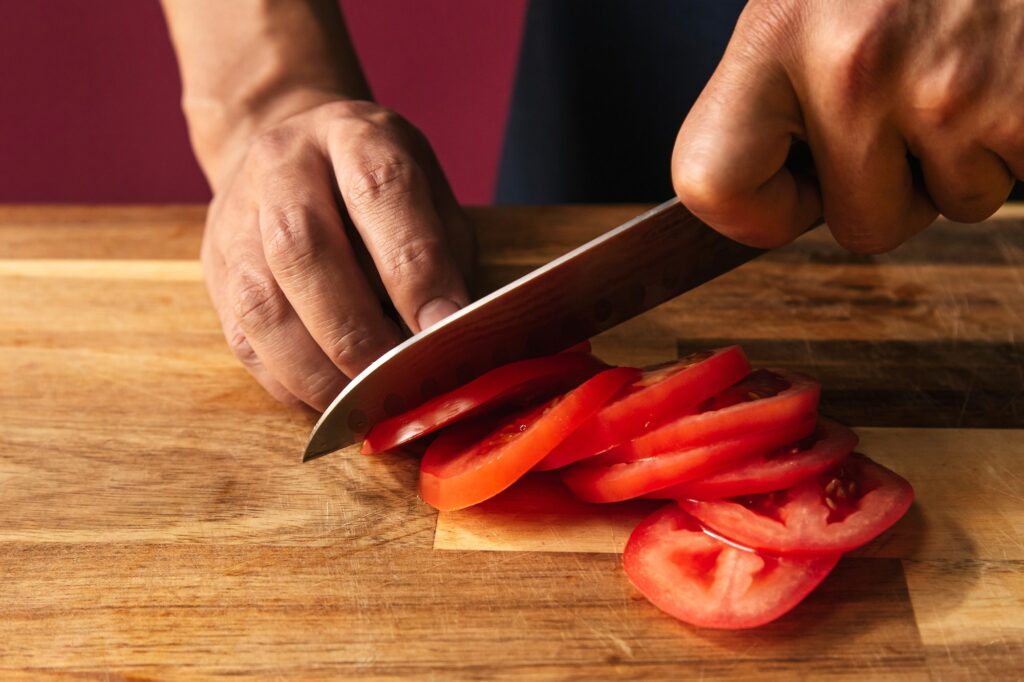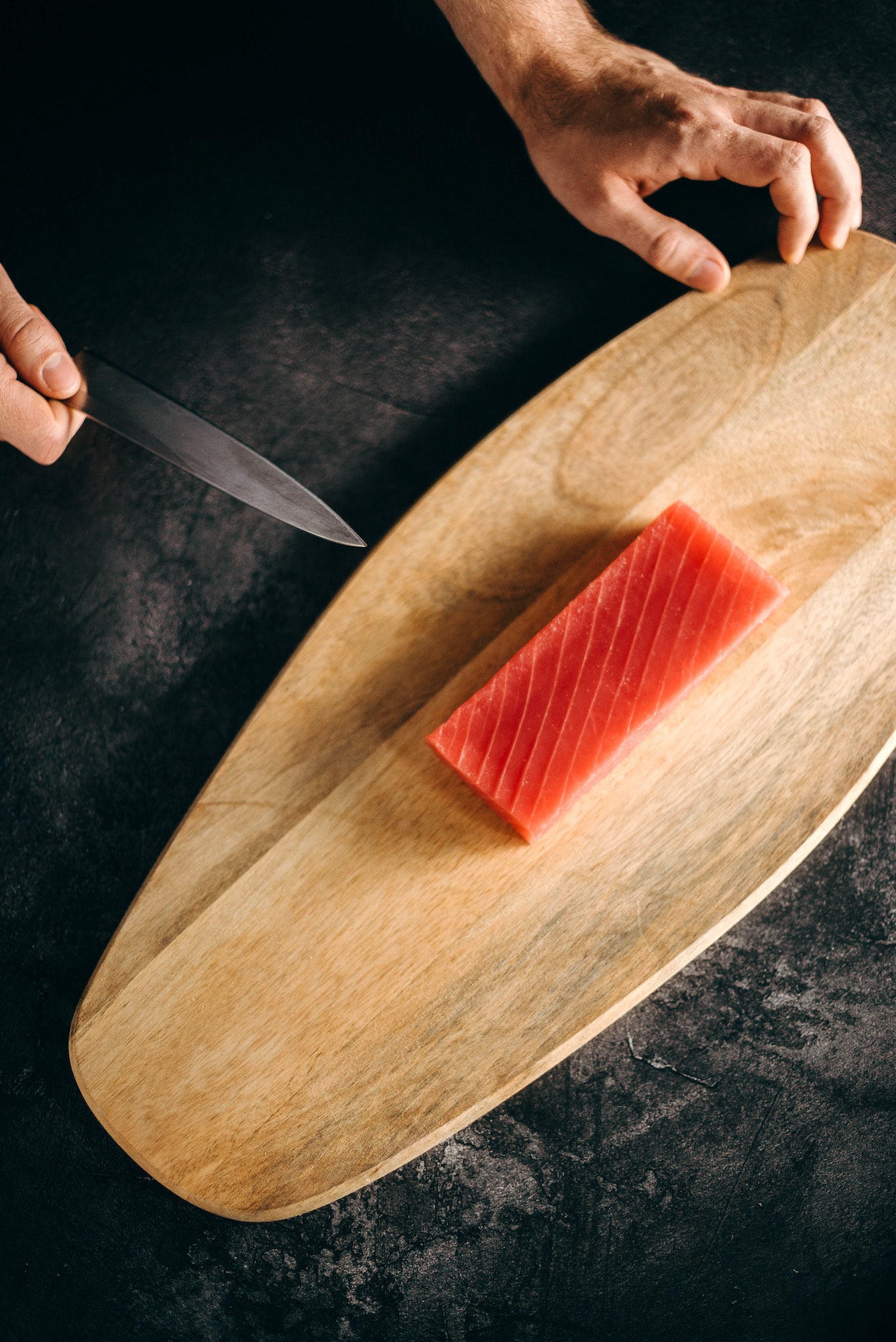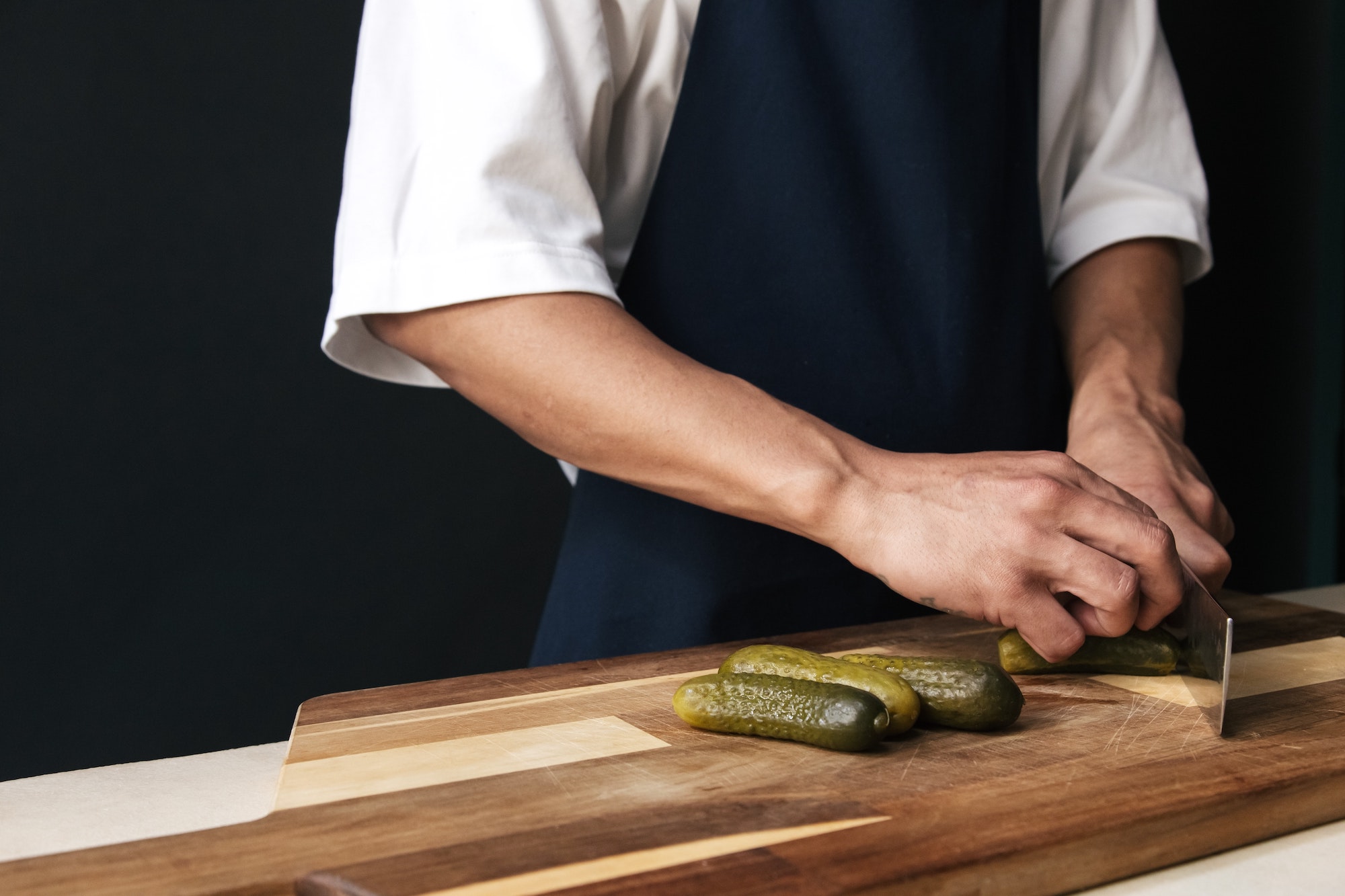Much like a good cast-iron pan, wooden chopping boards are solid kitchen essentials whose proper maintenance yields great returns. If cast-iron cookware relies on proper seasoning to ensure a non-stick surface and an overall even cook, wooden boards need to be oiled regularly to prevent it from becoming brittle and maintain that smooth surface that is gentler on knife edges. A few extra steps in caring for these kitchen essentials can go a long way, so we have listed the five that can extend the life of your wooden chopping boards for many years.
1. Never leave them soaking
One of the key things to avoid when it comes to washing is leaving wooden chopping boards in contact with water for too long. Wood is (usually) porous, so as much as possible, minimize its exposure to water as this will cause warping and cracking, effectively shortening its life. Do not soak it or leave it in the dishwasher. A quick, careful wash under warm running water using a sponge and some soap or unscented dishwashing liquid will do the trick (this can also apply to other wooden kitchen implements).
Wood is (usually) porous, so as much as possible, minimize its exposure to water as this will cause warping and cracking, effectively shortening its life.
As for stains, The New York Times recommends scrubbing the board with a mixture of baking soda and water. Wash both sides even if you just used one side to make sure the board dries evenly. Remember, water can cause warping. Afterwards, thoroughly dry the board with a soft, clean dish cloth or paper towels. Let it stand upright to let remaining drops of water fall off the board. Once completely dry, it can be stored. Take note that not adequately drying these boards can result in the buildup of mildew, which, although can be sanded off and reveal a new and usually smoother work surface, can easily return so you might be better off just getting a new cutting board.
Sanitation is something any careful cook takes seriously, and the concern over bacteria buildup in organic materials such as wood is not an unfounded fear. But according to Serious Eats, studies have shown that the porousness of wood, which is what allows for bacteria absorption, eventually also leads to the killing of bacteria. This is because the holes in the material are too small, leaving no room for bacteria to multiply.

One thing to look out for though are large cracks on the board, in which case we recommend the tougher cutting boards made of hardwood, or even bamboo, which is more resistant to scarring from knives (but is in turn less gentle on knives). In any case, deep or wide cracks that cannot be properly washed are a sign to get a new cutting board.
2. Pantry items can keep wooden chopping boards fresh and sanitized
To eliminate food odors or any residual flavors, use a mixture of lemon juice and salt. Simply sprinkle your board with a tablespoon or two of salt and with the cut side of a lemon, rub the salt all around the board. This will create a paste that will hopefully leave the board smelling fresh and free of unpleasant odors.
To eliminate food odors or any residual flavors, use a mixture of lemon juice and salt.
Otherwise, rubbing the board with a mixture of water and baking soda is a good additional step. Then, let the board dry out completely, and then finally, wash and dry it how you would after using it, taking extra care to remove bits of salt or baking soda that might have stuck to the board.
3. Keep the oil in and the water out
Frequently washing wooden chopping boards can dry them out, so it helps to oil (and even wax) them to prevent them from cracking, warping, or going brittle. A coating of oil also adds a layer of protection against excess moisture and stains.
To oil a wooden cutting board, start by pouring a generous amount of food grade mineral oil on your board, just enough so it covers the entire surface. Then, using a paper towel or a clean, soft dish cloth, thoroughly rub the oil onto the board, making sure to reach all spots, including all sides, as well as the ridges and handles, if any. Using circular motions can help so as to allow the wood to better absorb the oil.

Depending on how dry the board is, which in turn depends on how long ago it was last properly oiled, this step can be repeated once or twice. Once you’re done oiling the board, let it stand upright for a few hours to let the wood absorb the oil. The last step involves wiping off any excess oil. Optionally, you can also apply some food-safe beeswax to help seal the layer of oil you just applied. An extra layer of wax will keep the oil in and the water out, which is the kind of protection that can help wooden chopping boards stay clean and durable for a long time.
This entire process can be done at least once a month or whenever you think your board needs it (an easy way to tell would be to sprinkle it with a few drops of water—if it seeps into the surface, then the board needs to be oiled).
4. In exchange for a few extra years, take these few extra steps
With the above steps done regularly, wooden cutting boards can last for years. A few other extra tips that can make a difference include being conscious of which parts of the board are frequently bearing the brunt of your knives. If you are only cutting on one or two specific spots, the board will not wear evenly, making it prone to warping or cracking. Utilizing the entire surface of the board ensures that it wears out evenly, so from time to time, remember to use the other side of your cutting boards so you’re not eventually left with a curved or cracked board.
Utilizing the entire surface of the board ensures that it wears out evenly, so from time to time, remember to use the other side of your cutting boards so you’re not eventually left with a curved or cracked board.
Meanwhile, the best practice in terms of storage depends on, again, the zero-moisture rule—the same rule that is basically the essence of proper board care. Besides proper drying before storage, it’s important to never store these boards outdoors where it can be exposed to humidity. Lastly, if you have any wooden cutting boards that are not in your current roster of kitchen equipment that you use every day, make it a point to oil them at least once a month. Wooden boards kept in storage for months without proper oiling will come out warped should you decide to use them one day.
5. Justify the upkeep by focusing on the advantages
Wooden chopping boards clearly require a lot of upkeep, certainly much more than plastic boards, which, in addition to being light, can in fact withstand the heat in dishwashers and are not prone to warping. So why bother using the highly sensitive wooden cutting board?

The first answer that comes to mind is obvious to many cooks: They are a pleasure to cut on, and with a surface that is firm and can expertly absorb shocks from a knife, are possibly the safer material, being that it isn’t as prone to slippage compared to plastic boards.
Wood is also a lot gentler on knives, so there’s a lesser chance that these blades will come out dull after years of use. The amount of work it takes to keep these boards in good condition is only easily justifiable once you see the results: Wooden cutting boards are the most durable, sanitary, and safest of its kind—if only you can commit to taking these extra steps to keep them that way.
Learn more here:





